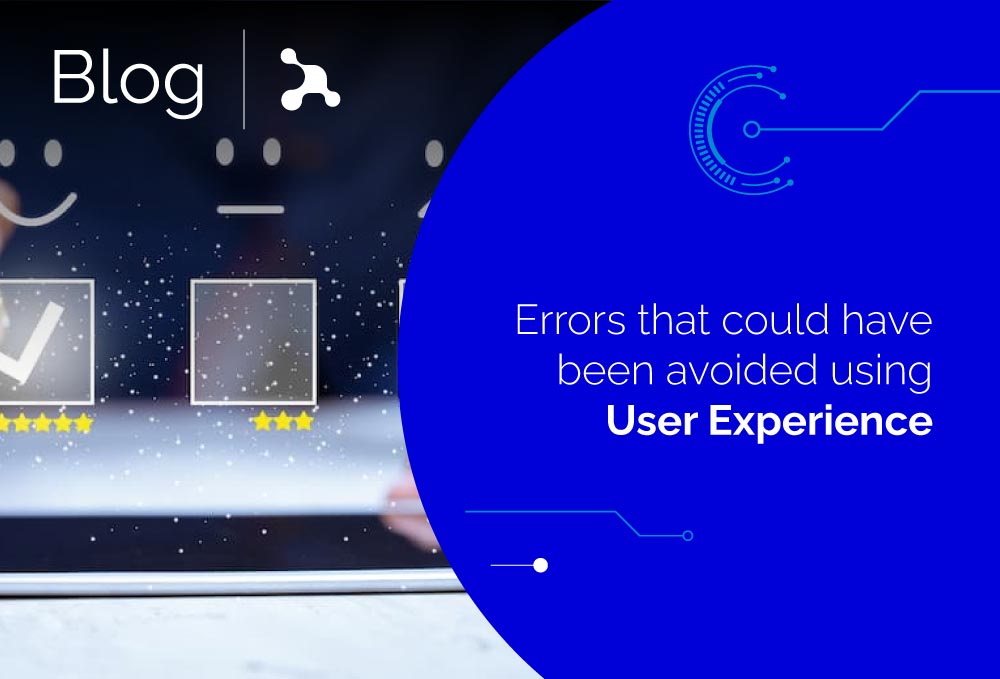User experience (UX) is a crucial factor in the success of any product or service. Despite this, many companies have underestimated its importance, leading to failures that could have been avoided with a more user-centered approach.
Below, we explore some cases of famous companies whose products or services failed due to poor UX and how a user-centered design could have changed their fate.
1. Google Glass: The Smart Glasses No One Wanted to Use
Problem: Google Glass was launched in 2013 as innovative smart glasses with augmented reality. However, the product faced significant criticism for its unattractive design, privacy issues, and confusing user interface.
UX Lessons:
–User Research:Deeper research into user needs and expectations would have revealed concerns about privacy and uncomfortable design.
–Iterative Design: Prototyping and usability testing could have improved the interface and comfort of the device.
– Clear Communication: Clearly informing users about how their data is managed could have alleviated privacy concerns.
2. Microsoft Zune: The Competitor That Never Was
Problem:Microsoft launched the Zune in 2006 as a competitor to Apple’s iPod. Despite having some good features, the user interface was confusing, and the device lacked a cohesive and engaging experience.
UX Lessons:
– Simplification: A more intuitive and simplified design could have improved usability and user satisfaction.
– Integral Ecosystem: Creating a coherent and connected user experience with other Microsoft products and services could have increased Zune’s appeal.
– Continuous Feedback: Incorporating continuous user feedback to make incremental improvements in the interface and functionalities.
3. Windows 8: The Confusion of Desktop and Touchscreen
Problem: Windows 8, launched in 2012, attempted to unify the desktop and touchscreen experience. The resulting interface, with its tile start screen and removal of the traditional start button, was confusing and frustrating for many users.
UX Lessons:
– Consistency: Maintaining familiar elements like the start button while introducing new features could have eased the transition for users.
– Usability Testing: Conducting thorough tests with different user groups to identify usability issues and adjust the interface accordingly.
–Customizable Options: Allowing users to customize their experience to fit their individual preferences could have mitigated resistance to change.
4. Blackberry: The Fall of a Tech Giant
Problem:BlackBerry, once a leader in smartphones, failed to adapt to new market demands, especially in terms of user experience and apps. The interface of its latest models was complicated and did not fit well with the emerging needs of smartphone users.
UX Lessons:
– Adapting to Trends: Staying aware of new trends and adapting to them is crucial to maintain market relevance.
– Simplicity and Usability: Designing an intuitive and easy-to-use interface with a focus on user experience.
– Continuous Innovation: Investing in innovation to offer features that solve real user problems and remain competitive with new technologies.
5. Facebook Home: The Interface No One Wanted
Problem: Facebook Home, launched in 2013, was a customization layer for Android that integrated Facebook into the device’s home screen. Users found the interface intrusive and unhelpful, leading to negative reviews and low adoption.
UX Lessons:
– Seamless Integration: Ensuring new features integrate smoothly into the existing user experience.
– Customization and Control: Offering users control over how features and functionalities are presented.
– Usability Testing: Conducting extensive usability tests to ensure the interface enhances rather than disrupts the user experience.
User experience is fundamental to the success of any product or service. The failures of Google Glass, Microsoft Zune, Windows 8, BlackBerry, and Facebook Home underscore the importance of understanding and designing for user needs. By focusing on user research, simplicity, consistency, and adaptability, companies can avoid costly mistakes and create experiences that truly resonate with their audiences.




